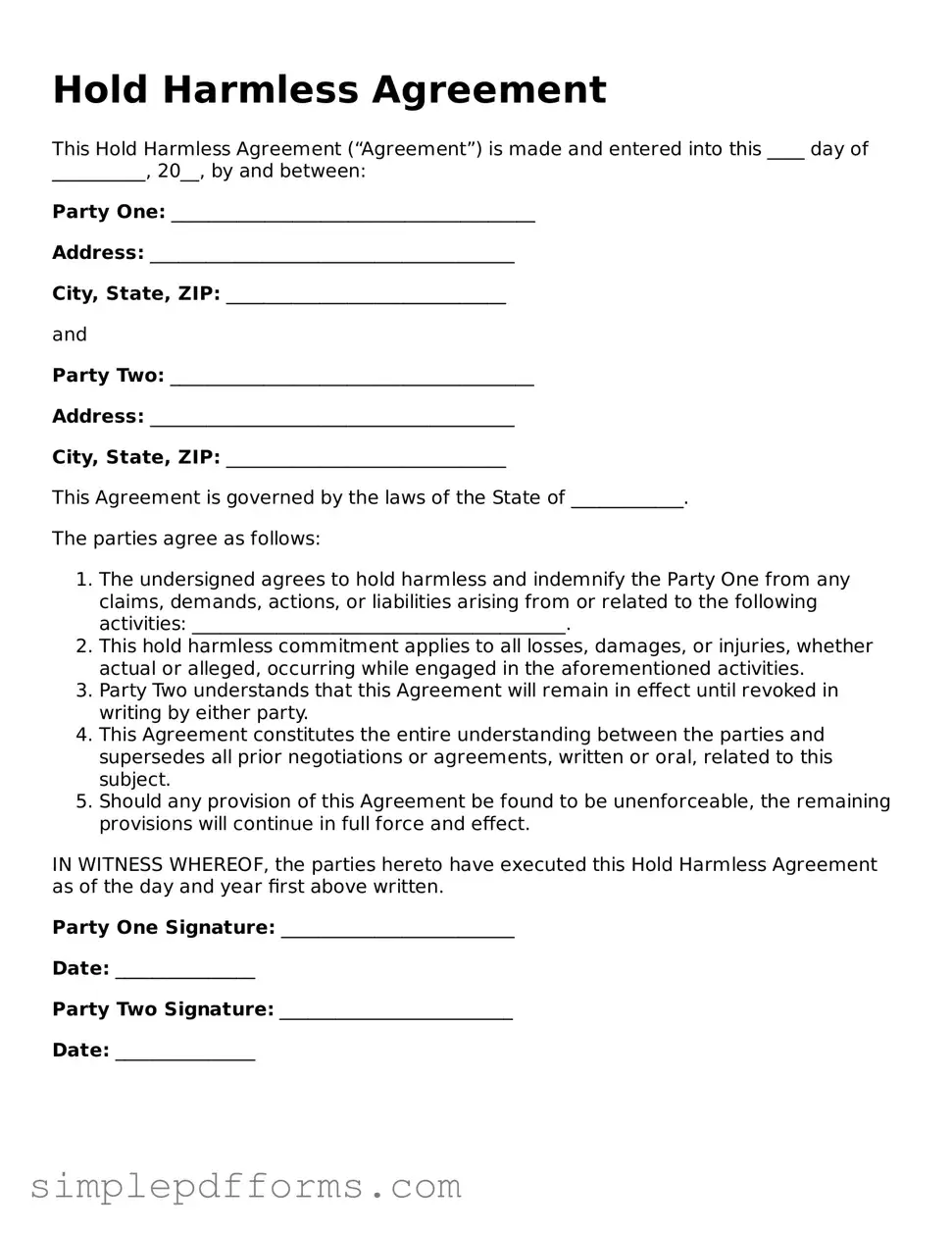Hold Harmless Agreement
This Hold Harmless Agreement (“Agreement”) is made and entered into this ____ day of __________, 20__, by and between:
Party One: _______________________________________
Address: _______________________________________
City, State, ZIP: ______________________________
and
Party Two: _______________________________________
Address: _______________________________________
City, State, ZIP: ______________________________
This Agreement is governed by the laws of the State of ____________.
The parties agree as follows:
- The undersigned agrees to hold harmless and indemnify the Party One from any claims, demands, actions, or liabilities arising from or related to the following activities: ________________________________________.
- This hold harmless commitment applies to all losses, damages, or injuries, whether actual or alleged, occurring while engaged in the aforementioned activities.
- Party Two understands that this Agreement will remain in effect until revoked in writing by either party.
- This Agreement constitutes the entire understanding between the parties and supersedes all prior negotiations or agreements, written or oral, related to this subject.
- Should any provision of this Agreement be found to be unenforceable, the remaining provisions will continue in full force and effect.
IN WITNESS WHEREOF, the parties hereto have executed this Hold Harmless Agreement as of the day and year first above written.
Party One Signature: _________________________
Date: _______________
Party Two Signature: _________________________
Date: _______________
